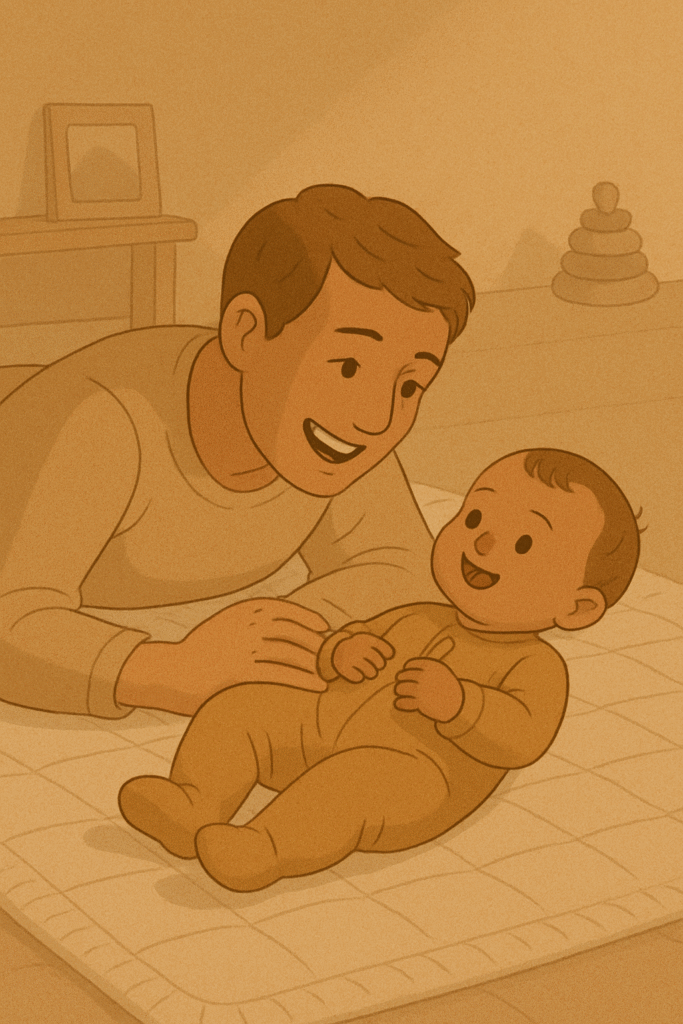Simple, connected play that supports development—without the overstimulation.
Introduction: Play Doesn’t Have to Be Loud to Matter
In a world of flashing toys and noisy gadgets, it’s easy to forget that babies learn best through calm, connected, open-ended play.
A gentle play routine doesn’t just entertain—it soothes the nervous system, strengthens your bond, and builds your baby’s confidence.
Let’s explore how to create a rhythm of play that works for both of you.
Start With Connection First, Not Stuff
Play begins with presence—not plastic.
- Sit on the floor together
- Make eye contact
- Mirror baby’s movements or sounds
- Use your face, voice, and hands as their first toy
These early exchanges form the foundation for how your baby explores the world.

Build Rhythm Into Your Day
Instead of scheduling long sessions, think of play as a series of gentle invitations throughout the day.
- Morning: Stretching, rolling, mirror time
- Midday: Sensory play (fabric, water, nature)
- Evening: Storytime, lullabies, massage with music
This creates a pattern of stimulation and rest that supports natural rhythms.
Keep Toys Simple and Sensory
Babies don’t need bins of toys. They need a few well-chosen objects they can explore at their own pace.
Examples include:
- Soft cloths or scarves
- Wooden rattles or teething rings
- Board books with real-life images
- Nesting cups or stacking rings
- Textured balls or natural materials
Rotate 3–5 toys weekly to keep things fresh and avoid overwhelm.
Create a Calm Play Space
Your baby’s play area can be simple and soothing.
- A soft rug or mat
- A basket of 3–5 open-ended toys
- Natural light
- Minimal visual clutter
Play doesn’t need a room—it needs a feeling of safety and freedom.
Be a Co-Player, Not an Entertainer
Let your baby lead.
- Observe before stepping in
- Name what they’re doing (“You’re touching the soft ball”)
- Celebrate curiosity, not outcomes
Your presence helps them feel secure while building focus and problem-solving skills.
End With Stillness
Just as babies need stimulation, they also need time to integrate what they’ve learned.
Offer winding-down play:
- Watching shadows
- Listening to music
- Rocking or swaying together
- A simple book or quiet cuddle
These transitions help regulate energy and prepare for naps or bedtime.
Final Thoughts: Gentle Play Is Powerful
You don’t need to buy more to play well. You just need to slow down, tune in, and follow your baby’s lead.
Gentle play supports development, builds trust, and brings more joy into your daily rhythm.

Leave a Reply